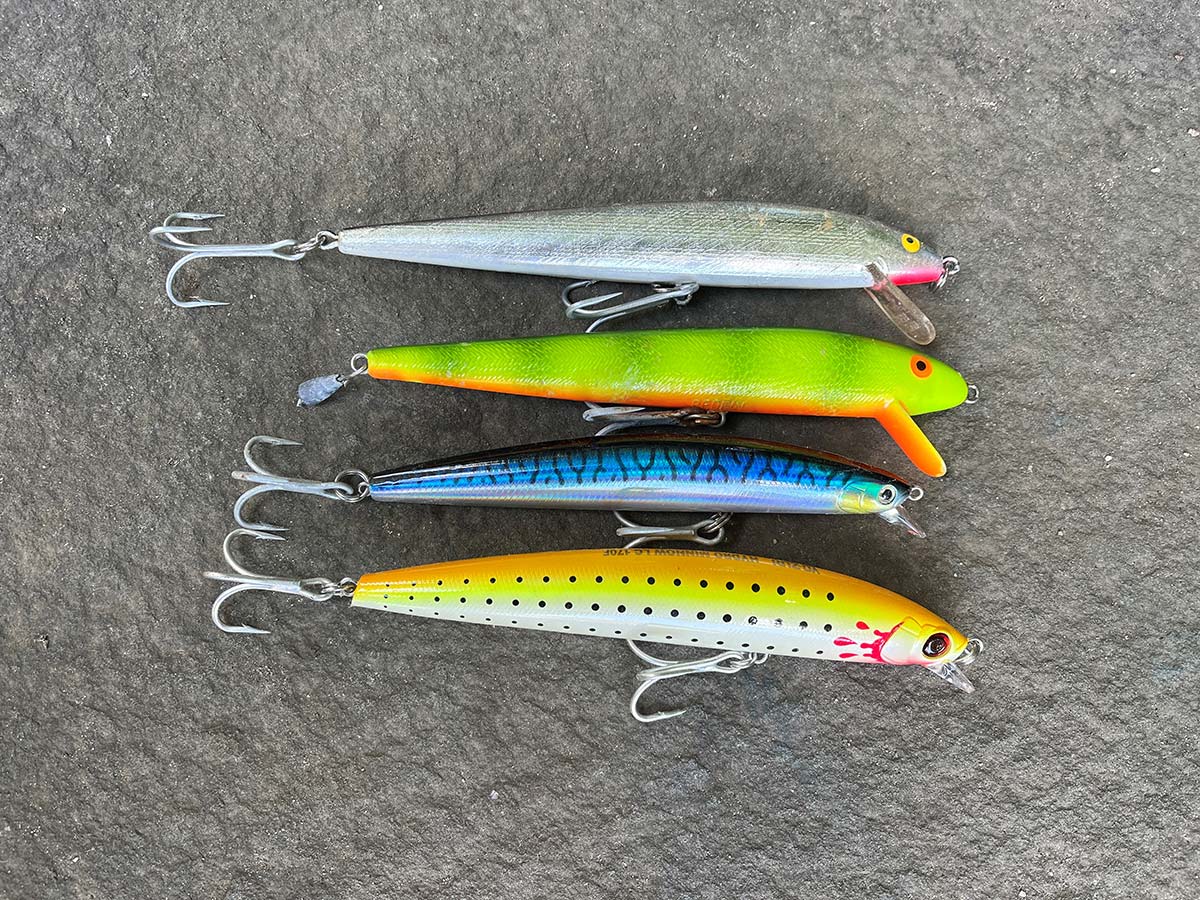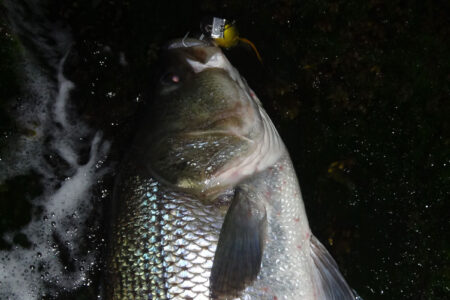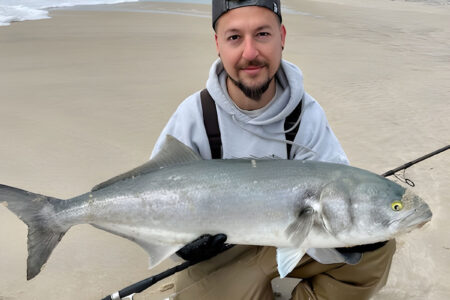
The plastic-lip swimmer has a long history in the surf, but the path the lead us to the high-tech versions of today is pretty interesting.
Plastic swimmers have been utilized in the surf, at least to some degree, practically since the day they hit the open market. Prior to their invention, nearly every lure thrown by striper fishermen was made of wood and they were typically large, heavy and bulky. This fact created limitations for surfcasters; for instance, they were powerless against stripers that were keyed in on small and slender baits like sand eels. While some anglers took the teaser route, others sought other slender solutions in the form of the plastic-lipped swimmers freshwater anglers were using.
As you might imagine, those first experiments were rarely successful as striped bass are just so much stronger than freshwater bass and they would dispose of these dainty swimmers and their waifish hooks in seconds flat. But before long the Rebel was introduced, which held up well enough and caught lots of fish in spite of the fact that it literally cast like a Snicker’s bar wrapper. Rebel was one of the first companies to make an innovation in the name of better casting and durability. They introduced the Windcheater, which was shorter and thicker, which I believe was done in an attempt to focus the center of gravity around a more compact body to help carry it on the cast—this plug quickly gained popularity and caught lots of stripers, large and small.
Around that same time the Cotton Cordell Red Fin was gaining its own following but, it too, casted like a ginger snap. Anglers were responsible for the innovations here, injecting the hollow plastic body with everything from water to maple syrup to mercury. These innovations are still used today with great effectiveness. The Red Fin’s slimmer body made it a better choice when faced with large sand eels and fish to at least 60 pounds have been landed on these swimmers.
Basically, the conundrum that lure manufactures faced was that, if they wanted to increase casting distance, they needed to add weight, but it needed to be in the tail to make it fly on the cast; tail-weighted swimmers would barley swim, and when they increased the weight in the belly, they looked alive in the water but tumbled and flopped when cast, especially in the wind. The shortening of the body, as in the Windcheater, sort of, half-solved this—it was basically the difference between throwing a stick and a rock, the more compact Windcheater was easier to throw a longer distance.
The liquid injected into the Red Fin would gather in the tail and carry the cast and then, when the lip dug into the water, it would flow forward, settling right behind the belly hook hanger (right where it needed to be). The reason why there were so many different liquids injected had to do with evaporation problems and trying to concentrate more weight closer to the hook hanger. The more that weight was concentrated, the better the action was, which is why mercury was so popular for a while. And also explains why Cotton Cordell introduced a Red Fin with a lead ball inside that would roll to the tail for the cast and then roll forward to the hook hanger on the retrieve—this, primitive attempt at a weight-transfer system fell short in the action department.
In the late 1990’s Yo-Zuri introduced the Crystal Minnow, which incorporated an internal weight transfer system. Basically they were the first to solve the problem for saltwater anglers. A channel inside the lure would direct a ball bearing to the tail for the cast and to the belly for the swim. Once that was established, the concept took off with the Daiwa SP Minnow gaining rapid acceptance by the surf crowd and then the Yo-Zuri Hydro Minnow kind of fixed all the problems, incorporating a magnetic weight transfer system into a plug that featured rugged hook hangers, 3x hooks and split rings with a very realistic and effective swimming action.
Whether you’re using an old Rebel or the elegantly designed Hydro Minnow, the physics of how they swim is very much the same. There is enough weight in the belly to make them float ‘belly down’ in the water and to ensure that the lip is submerged. The lip pulls the bait underwater when the angler begins his retrieve, but that lip also makes the plug want to roll over, the internal weighting and the hooks are heavy enough to overcome the roll and the weights pull the belly back down where momentum carries it past it’s resting point and the same dance of rolling versus the internal weights happens on the other side. This happens hundreds of times per retrieve. When the weight is placed properly, which is about dead center, the plug will pivot around the axis of the weight location, creating the illusion that it is swimming like a live baitfish.
But if you were to inspect the swimming action very closely, you’d see that it’s actually an orchestrated rolling motion with a balanced pivoting of the body that, to the fish, looks good enough to eat.



